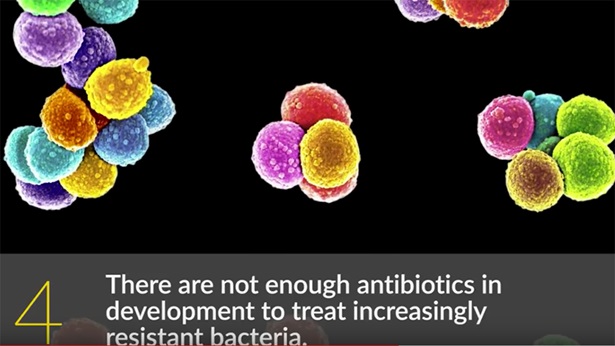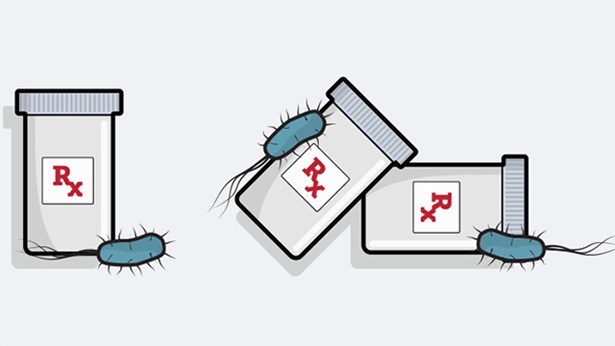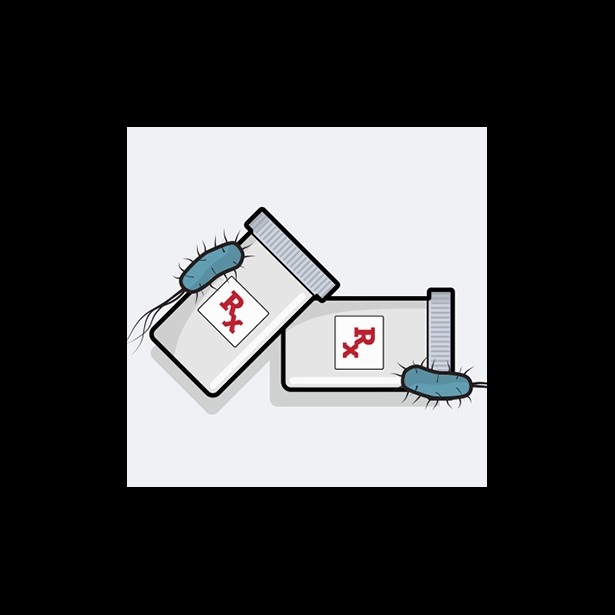The Fight Against Superbugs: 5 Priorities for 2019
Momentum must continue to improve antibiotic stewardship and spur discovery

This article was updated on Feb. 15, 2019 to add detail on funding government efforts to combat antibiotic resistance.
First, the good news: 2018 saw encouraging advances in efforts to address the global public health threat of antibiotic resistance. The number of hospitals in the United States with antibiotic stewardship programs increased, and The Pew Charitable Trusts launched a first-of-its-kind open-access tool to give researchers around the world unprecedented access to data that can help spur antibiotic discovery.
The push to improve antibiotic use in animals yielded good news at the end of 2018 as well, with the announcement of a comprehensive antibiotic stewardship framework and new data from the Food and Drug Administration (FDA) that showed a 33 percent drop in sales of antibiotics for use in animals in 2017 from the previous year.
Still, the dangers posed by antibiotic resistance remain serious. The World Health Organization (WHO) sees this as one of the 10 most urgent global health threats of 2019, and U.S. Secretary of Health and Human Services Alex Azar has said that “the promise of modern medicine itself is at stake.”
Here are some key areas to keep an eye on in 2019:
Requiring antibiotic stewardship programs in health care facilities
Effective stewardship programs combat antibiotic resistance by ensuring that patients get the right drug at the right dose at the right time and for the right duration. This helps patients heal as quickly as possible while minimizing the risk of adverse side effects and slowing the emergence of resistant bacteria. Implementation of such programs has increased dramatically in recent years, but much work remains to ensure that they are comprehensive and meaningful.
The Centers for Medicare & Medicaid Services (CMS) proposed a policy more than two years ago to require antibiotic stewardship programs in hospitals, but it has yet to be finalized. CMS must finish this work before the proposal expires in June. Otherwise, nearly a quarter of the nation’s hospitals—those that take part in Medicare and Medicaid but do not participate in any private accreditation programs—will have no incentive to implement or improve stewardship programs, and no accountability for program quality. Revisiting the policy after June would restart the time-intensive regulatory process and probably take years. CMS has already implemented a similar program in long-term care facilities.
The centers also should require reporting of antibiotic resistance and use data in the National Healthcare Safety Network, a system managed by the Centers for Disease Control and Prevention (CDC), to improve the nation’s antibiotic use and its ability to track resistant bacteria.
To enhance stewardship in hospital settings, Pew and CDC are exploring the reasons for unnecessary antibiotic use and plan to set specific targets to reduce inappropriate use in hospitals-–one of the goals of the National Action Plan for Combating Antibiotic-Resistant Bacteria.
Improving antibiotic use in outpatient settings, such as doctors’ offices, emergency rooms, retail health clinics, and urgent care centers, should be a priority in 2019. A large proportion of antibiotics in the U.S. are prescribed in these facilities, although there are fewer mechanisms for driving improved stewardship than in inpatient settings.
Still, health plans can provide feedback to doctors on their prescribing habits and offer incentives for improved prescribing practices. Additionally, health systems and agencies can supply educational resources and technical assistance to outpatient facilities.
Pew has been examining the barriers to and opportunities for expanding antibiotic stewardship programs in these outpatient settings. Research from 2018 uncovered areas where urgent care centers and retail health clinics can work to improve prescribing, and forthcoming work will help health care professionals in other settings initiate and enhance stewardship efforts.
Improving antibiotic stewardship in animal agriculture
Both FDA and the food animal industry have taken important steps to reduce antibiotic use in animal agriculture. In 2019, stakeholders need to continue this progress to ensure the long-term sustainability of such efforts. For example, FDA should publish specific, concrete timelines that detail how it will achieve the objectives and actions in its five-year plan. And it should accelerate the implementation timelines, given the urgency of the threat.
All remaining uses of medically important antibiotics should be brought under veterinary oversight, antibiotic labels should be updated to address injudicious uses that are currently allowed, and antimicrobial use and resistance surveillance data should be enhanced by strengthening and expanding existing programs and by finalizing FDA’s biomass adjustment method.
In late 2018, Pew, along with Farm Foundation and major food animal companies, released the Framework for Antibiotic Stewardship in Food Animal Production. This year, organizations implementing the framework’s core components as part of efforts to combat resistance and improve animal health will be working to reduce demand for antibiotics—through efforts such as improved management practices and the use of nonantibiotic alternatives—and to improve how the drugs are used when needed.
Finding innovative ways to discover urgently needed new antibiotics
Despite the need for new antibiotics to combat ever-evolving superbugs, several pharmaceutical companies downsized or discontinued antibiotic research programs last year. Expressing “deep concern,” FDA Commissioner Scott Gottlieb called for “stronger ‘pull’ incentives” to encourage research and development by providing additional payments for qualifying new antibiotics once they reach market. Pew, the Infectious Diseases Society of America, Trust for America’s Health, and companies engaged in antibiotic research and development have called on Congress to advance a set of economic incentives to make antibiotic development viable.
Fundamental gaps in basic scientific research and a lack of information sharing also hinder new antibiotic discovery. The Shared Platform for Antibiotic Research and Knowledge (SPARK) officially launched in September 2018 to help scientists around the world find novel ways to defeat drug-resistant Gram-negative bacteria, which are among the most dangerous superbugs. Biopharmaceutical companies such as Novartis and Achaogen have contributed valuable data, and Pew continues to build the SPARK user community and encourage more companies to add data.
Ensuring funding to combat antibiotic resistance
Pew, along with farmers, doctors, researchers, and patients, continues to support federal programs engaged in the fight against superbugs. This includes ensuring that key agencies such as CDC, FDA, the National Institutes of Health, the Biomedical Advanced Research and Development Authority, the Department of Agriculture, and others have sufficient funding to perform essential functions such as collecting data to track resistant bacteria and improve antibiotic use, and to pay for antibiotic research. Advocates will come to Washington in March to urge their representatives to make sure that antibiotic resistance remains a national priority.
Continued international momentum
Antibiotic resistance knows no borders, and cooperative efforts by U.S. and global stakeholders are essential. In particular, more governments, private companies, and nongovernmental organizations from around the world should detail formal commitments to combat antibiotic-resistant bacteria via the U.S. Antimicrobial Resistance (AMR) Challenge. A United Nations report, expected this year, will document whether countries have made adequate progress in tackling AMR since the General Assembly high-level meeting on antibiotic resistance in 2016.
WHO’s list of global health threats makes it clear that AMR remains a priority, and, because the steps needed to counter such resistance are well known, 2019 must be a year of action.
Kathy Talkington directs The Pew Charitable Trusts’ antibiotic resistance project.


America’s Overdose Crisis
Sign up for our five-email course explaining the overdose crisis in America, the state of treatment access, and ways to improve care
Sign up

5 Facts About Antibiotic Resistance












